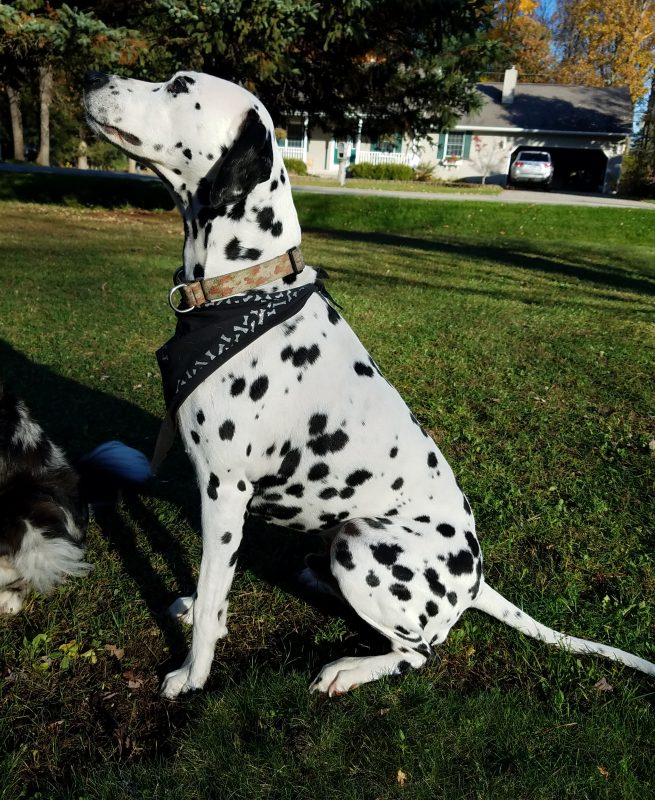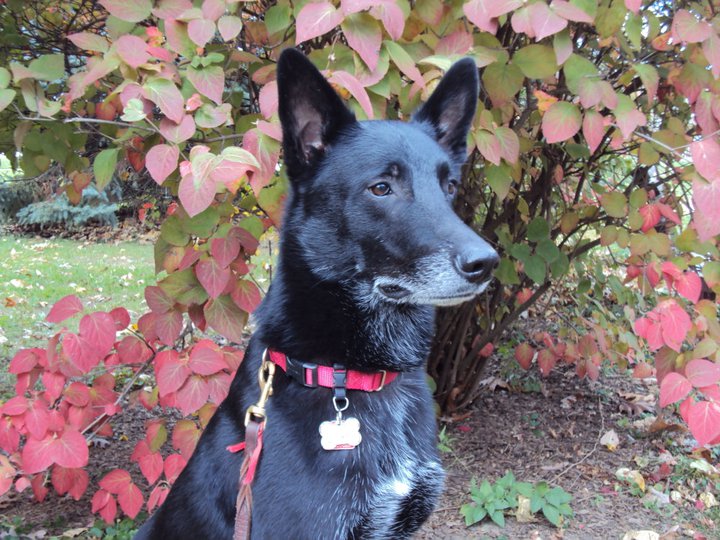Your Dog Doesn’t Know Sit; Achieving the Perfect Sit
by Colleen Lum LVT, CCRA
What is a proper sit and why does it matter?
Sloppy sit. Puppy sit. We’ve all seen the adorable pudgy puppy sitting on a hip with his legs off to the side or the grey faced dog rolled back on his rump with

Logan is demonstrating a beautifully tucked sit. His hind limbs are collected underneath himself with his knees and toes in alignment.
both feet extended out in front of him. How do they look when they try to stand? Are they struggling to get their legs underneath them or pulling themselves up with their front legs? How does their back look? Is it hunched over like your office co-worker hovering over their keyboard for hours? This seemingly minuscule oversight of proper posture is actually quite important in the overall health of any dog, whether it be a walk around the block companion to the high level sporting athlete. Let’s start with the basics.
The GOOD…
What is a proper sit then? If you look at the picture to the right, we can break it down. Observe the neatly tucked hind limbs. Flexed and positioned squarely beneath the dog’s body. Notice the upright position of his back and the even placement of the front limbs. When the dog starts out in this position, he or she is able to transition to a stand by pushing off with equal momentum of both hind limbs. And by doing so, is not overusing or straining the back or front limbs. This proper sit is also used as a home base or foundation for many of the targeted exercises we utilize here for basic strengthening. If a patient cannot get themselves in this position we either start re-teaching this or use a modified version if they physically cannot (severe osteoarthritis (OA) causing decreased ROM). Continue…

